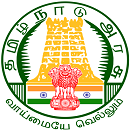Introduction
Probability is the measurement of how likely an event is to happen. It quantifies the level of uncertainty related to outcomes and is represented as a value between 0 and 1. A probability of 0 indicates impossibility, while a probability of 1 suggests certainty.
- 1- Sample Space: The sample space refers to all the possible outcomes of a random experiment.
- 2- Event: An event is a specific outcome or a group of outcomes within the sample space.
- 3- Probability of an Event: The probability of an event is a number between 0 and 1 that indicates the chance of that event happening. A probability of 0 means the event is impossible, while a probability of 1 means it is certain.
- 4- Equally Likely Outcomes: If all outcomes in the sample space are equally likely, the probability of an event A can be calculated by dividing the number of favorable outcomes for A by the total number of outcomes.
- 5- Probability Distribution: A probability distribution assigns probabilities to each possible outcome in a sample space, indicating the likelihood of occurrence.
- 6- Independent Events: Two events A and B are independent if the probability of one event occurring does not affect the probability of the other event occurring. The probability of both independent events A and B happening is the product of their individual probabilities.
- 7- Mutually Exclusive Events: Two events A and B are mutually exclusive if they cannot happen simultaneously. If A and B are mutually exclusive, the probability of either A or B occurring is the sum of their individual probabilities.
- 8- Conditional Probability: Conditional probability measures the probability of event A occurring, given that event B has already occurred. It is denoted as P(A|B) and is calculated by dividing the probability of both A and B occurring by the probability of event B.
- 9- Complementary Event: The complementary event of an event A, denoted as A', is the event that A does not occur. The probability of the complementary event A' is equal to 1 minus the probability of A.







.webp)
%20(1).png)






 CUSAT CAT (Cochin University of Science ...)
CUSAT CAT (Cochin University of Science ...) MHT CET (Maharashtra Common Entrance Tes...)
MHT CET (Maharashtra Common Entrance Tes...) KCET (Karnataka Common Entrance Test...)
KCET (Karnataka Common Entrance Test...) JEE Advanced (Joint Entrance Examination...)
JEE Advanced (Joint Entrance Examination...) TNEA (Tamil Nadu Engineering Admissions...)
TNEA (Tamil Nadu Engineering Admissions...) SRMJEEE (SRM Joint Engineering Entrance ...)
SRMJEEE (SRM Joint Engineering Entrance ...) WBJEE (West Bengal Joint Entrance Examin...)
WBJEE (West Bengal Joint Entrance Examin...).webp) GUJCET (Gujarat Common Entrance Test...)
GUJCET (Gujarat Common Entrance Test...) BITSAT (Birla Institute of Technology an...)
BITSAT (Birla Institute of Technology an...) VITEEE (Vellore Institute of Technology ...)
VITEEE (Vellore Institute of Technology ...)



%20(1).png)
